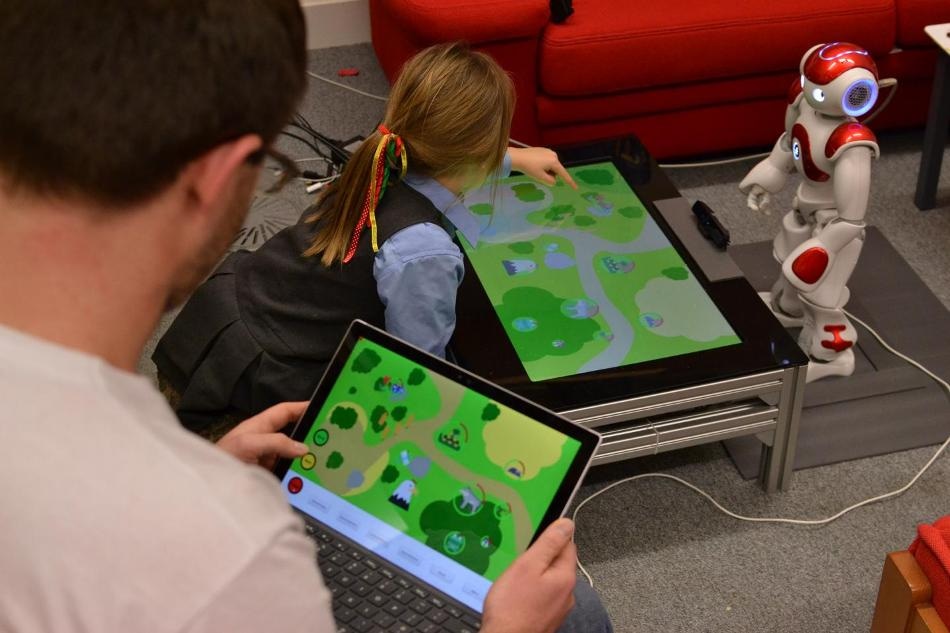Oct 24 2019
According to new research, robots may require just three hours to effectively learn procedures that can be used to assist teachers in a classroom scenario. The research involved a robot being programmed to gradually learn autonomous behavior from human demonstrations and direction. Details of the research have been published in Science Robotics.
 A child interacts with the robot tutor while a teacher provides guidance to the robot. (Image credit: University of Plymouth)
A child interacts with the robot tutor while a teacher provides guidance to the robot. (Image credit: University of Plymouth)
A human teacher manipulated the robot, teaching it how to assist young students in an educational activity. It was then able to assist the children in the same activity independently. The advice it then provided was revealed to be consistent with that given by the teacher.
According to the scientists, the method could offer several benefits to teachers, as they deal with growing demands on their time, and could be positive for students, with earlier research showing that the use of robots together with teachers in the classroom can be advantageous for their education.
They also think it holds significant potential for several other sensitive applications of social robots, for example, in assistive robotics and eHealth.
The research was coordinated by scientists at the University of Plymouth, with a long tradition of building social robots for a variety of education and health settings, in collaboration with colleagues at the University of Lincoln and the University of the West of England.
They performed a series of assessments to investigate a system called Supervised Progressively Autonomous Robot Competencies (SPARC) and showed that in a little over three hours, the robot could be effectively taught by the teacher to assist in an educational activity.
The autonomous robot used actions with a frequency different from that of the teacher, but it only used actions already shown, understood the unique dynamics related to each type of action, and its behavior had a constructive influence on the children. In fact, the robot was also able to effectively learn how to assist the pupils with social actions, like encouragements and praise.
The scientists say this could prove particularly valuable in future human-robot interactions because it would allow researchers to avoid the regular approach to engineering robotic controllers, whereby domain specialists describe a behavior to be leveraged by engineers. Rather, this method enables end-users to directly instruct a robot.
Creating autonomous social robot behaviours is a core challenge in social robotics, in both technical and ethical terms. My dream is that everyone should be able to profit from robots, not only engineers, and I think allowing people to teach robots to interact is the way to go. I hope the method we have proposed here could work in that regard and be applied to a large range of situations, for social and non-social robots.
Dr Emmanuel Senft, Study Lead, University of Plymouth
This project was part of Dr Emmanuel Senft’s PhD research.
Professor Tony Belpaeme from the University of Plymouth and Ghent University, who has worked in the field of social robotics for about 20 years, also contributed to the study.
The positives of using robots to help in a classroom setting are there for everyone to see. But how to set them to work so they provide consistent support to pupils, in a way that teachers can trust, is a real challenge. This study is certainly a positive step towards that. However, one unexpected thing it did show is we perhaps need to build greater acceptance and trust among teachers themselves as they said it did not result in a reduction to their workloads.
Tony Belpaeme, Professor, University of Plymouth and Ghent University